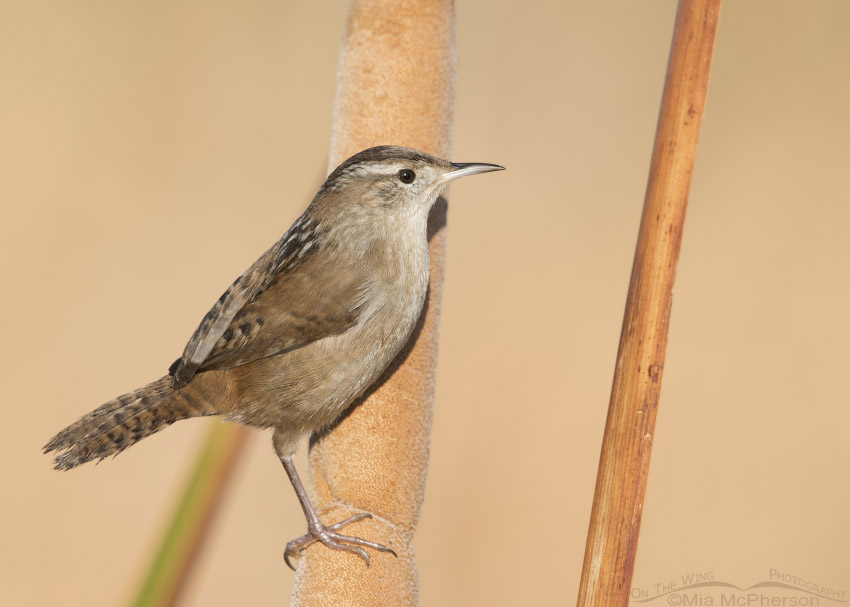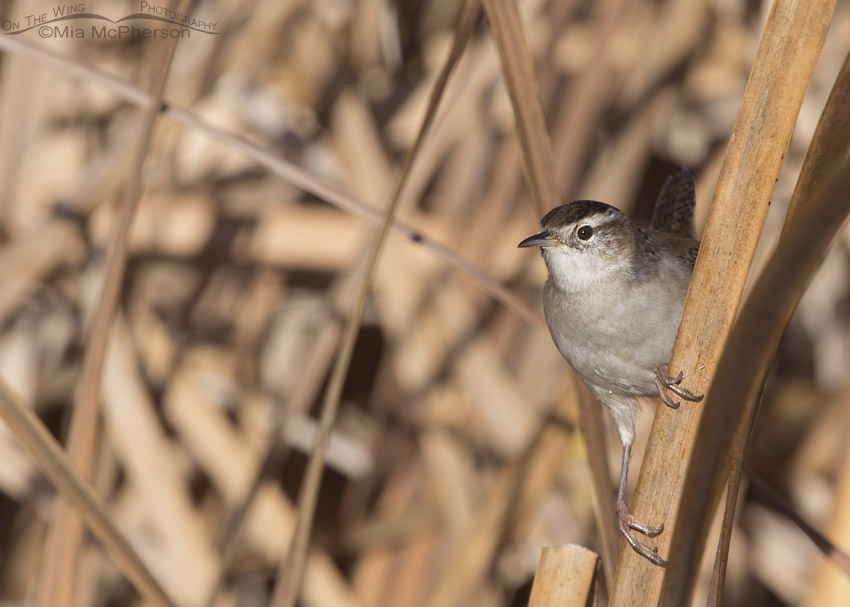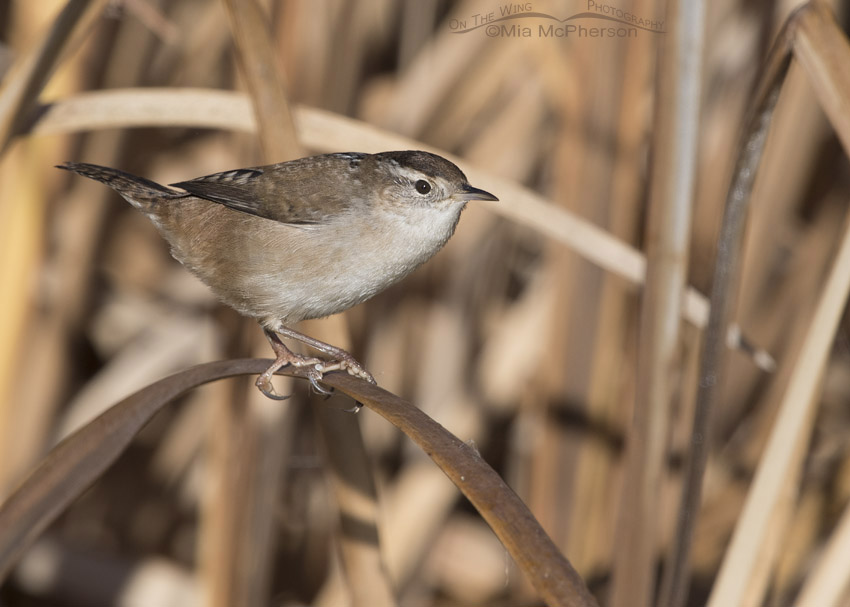 Farmington Bay Marsh Wren – Nikon D500, f7.1, 1/500, ISO 320, Nikkor 500mm VR with 1.4x TC, natural light
Farmington Bay Marsh Wren – Nikon D500, f7.1, 1/500, ISO 320, Nikkor 500mm VR with 1.4x TC, natural light
We have Marsh Wrens year round in Utah but after the breeding season is over the males are far less vocal, more secretive and they are much harder to find. About this time of the year the male Marsh Wrens begin to become more territorial and start to sing again. Only the male Marsh Wrens sing.
I have seen a few Marsh Wrens at Farmington Bay WMA and I am sure I would see some at Bear River Migratory Bird Refuge too if I could get to the auto tour loop. Right now the road to the auto tour loop is closed due to high water from rains and melting snow which has caused the Bear River to flood the road out to the loop.
 Marsh Wren on cattail leaf – Nikon D500, f9, 1/1000, ISO 400, Nikkor 500mm VR with 1.4x TC, natural light
Marsh Wren on cattail leaf – Nikon D500, f9, 1/1000, ISO 400, Nikkor 500mm VR with 1.4x TC, natural light
We have had unusually warm weather this February here in northern Utah and although there is heavy snow up in the Wasatch Mountains there are signs of spring down in the valley, I have already noticed the grasses greening up in some locations and many of the ponds and waterways are not ice free.
I will be listening for the male Marsh Wrens songs at the pond nearby and the marshes at Farmington Bay WMA and Bear River Migratory Bird Refuge and waiting to see them pop up on top of the cattails, phrags and rushes.
 Marsh Wren on a November morning – Nikon D500, f9, 1/1000, ISO 400, Nikkor 500mm VR with 1.4x TC, natural light
Marsh Wren on a November morning – Nikon D500, f9, 1/1000, ISO 400, Nikkor 500mm VR with 1.4x TC, natural light
I’m sure it won’t be long before I hear the first Marsh Wren songs of the year and I’m looking forward to them, I am also very much looking forward to the wrens being more visible which will make them easier to photograph too.
Life is good.
Mia
Click here to view more of my Marsh Wren photos plus facts and information about this species.


Hi Honey! Thank you for the great photo’s! Most of all the Wrens song! I know the House Wrens song, but wasn’t sure of the Marsh Wrens! Now I know an other ones song! Thank you, Danke! Have a great day! Love ya much mom
Thanks for the update on the auto tour loop, the great images, and the song link too!
This extremely wet spring in the west is such a contrast to the years of drought!!
Sorry, that should read wet “winter” that shows signs of spring (as Mia wrote).
Wrens are such perky little birds! I get a kick out of seeing each of those teeny tiny feet grasping a different piece of grass, as they so often do. I enjoyed hearing their song…thanks! The House wrens we have sing the same song over and over and over and…….without pause…until I think I’m going tomlse my mind!!! It’sca wonder they don’t starve…they can’t possibly eat and sing that much….
I am surprised these little guys over-winter in Northern Utah. They are fascinating little birds and a real challenge to photograph. I photographed them for the first time last year.